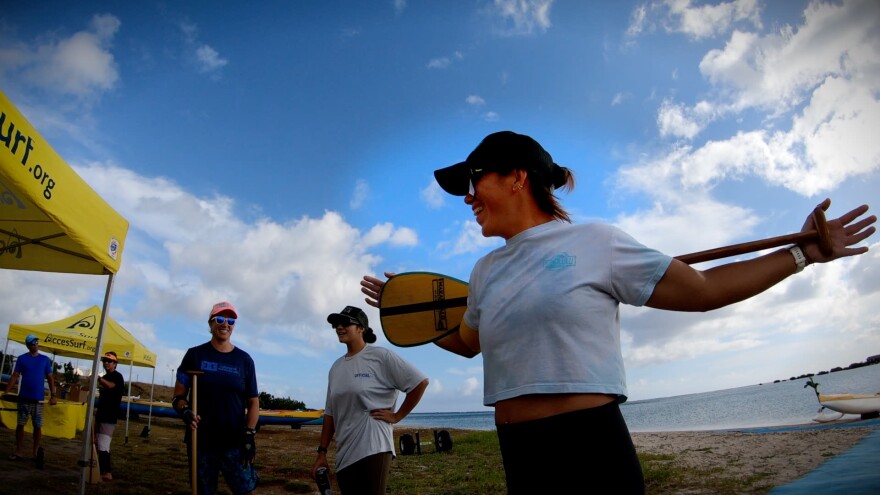Public health researchers at the University of Hawaiʻi at Mānoa are trying to determine just how vigorous outrigger canoe paddling really is.
The results of this study would help health care providers and Hawaiʻi's paddling community make the scientific case that this culturally relevant activity is an effective public health intervention.

Waiohuli native Kaulu Luʻuwai grew up on the ocean. She was born into a fishing family, and raised by the community of paddlers at Hawaiian Canoe Club, where competition is fierce.
“Physically, it includes a lot of cardio activity as well as muscles. So you need all the muscles, your legs, your lats, your arms, your core, everything,” Luʻuwai said.
The veteran steerswoman said paddling also helps with learning to observe the elements.
“Especially for like conditions. You’re learning the ocean conditions, you’re learning currents, you’re learning winds,” Luʻuwai said.
But the greatest benefit of paddling, she said, is the connection she has with her kūpuna.
“You get to experience a Hawaiʻi from a different perspective. People go hiking and they see different places from on the land, but as a paddler, you are exposed to so many different places from the perspective of the ocean,” Luʻuwai said.

“It’s just a super beautiful experience for me to see what my kūpuna — the same thing 100, 200 years ago.”
Luʻuwai was one of 48 paddlers who gathered at Keʻehi Lagoon last week to help researchers establish what scientists call metabolic equivalents, or METs, for canoe paddling.
METs show how many calories or energy expenditure a person burns when engaged in a physical activity.
Paddlers were fitted with a portable metabolic analyzer, which looks like a bulky respirator mask, that monitored the body’s response while paddling.

Lanikai Canoe Club paddler Simone Schmid is the co-lead researcher on the study.
“This is a study from paddlers, with paddlers, for paddlers,” Schmid said. “While the community already knows the health benefits of this culturally relevant physical activity, having the METs value for it lets us compare paddling to 800 other physical activities with previously established METs, including for example hula.”
Schmid is a post-doctoral researcher in UH Mānoa’s Thompson School of Social Work and Public Health, which has been studying the science of culturally relevant practices like hula.
“Once we have the corresponding METs values for outrigger canoe paddling, we can link it to all the existing research that proves the benefits of moderate to vigorous activity without having to start from ground zero, since the literature on paddling is very scarce,” Schmid explained.
Schmid said the results of this study could mean increased grant funding for canoe clubs and potentially health insurance coverage.
To learn more about the study, click here.




